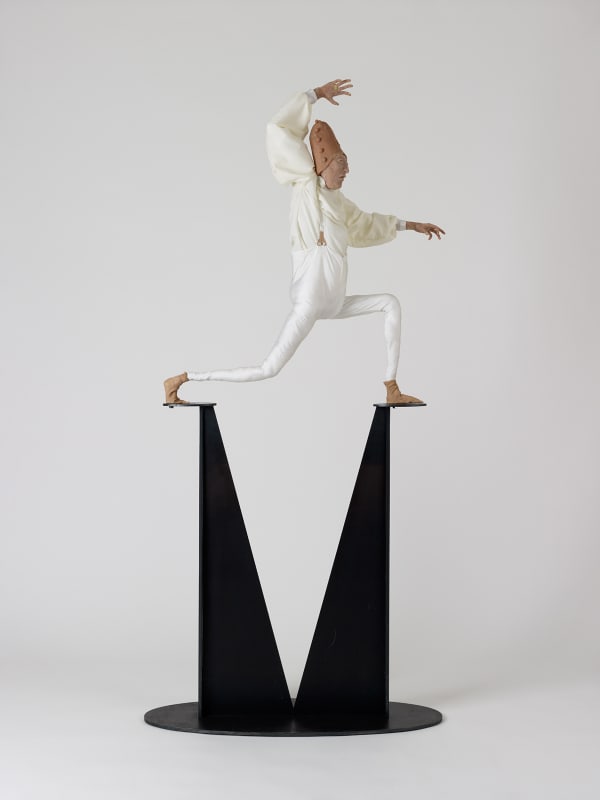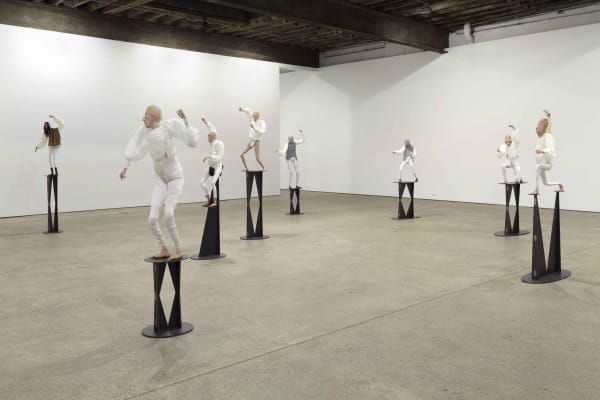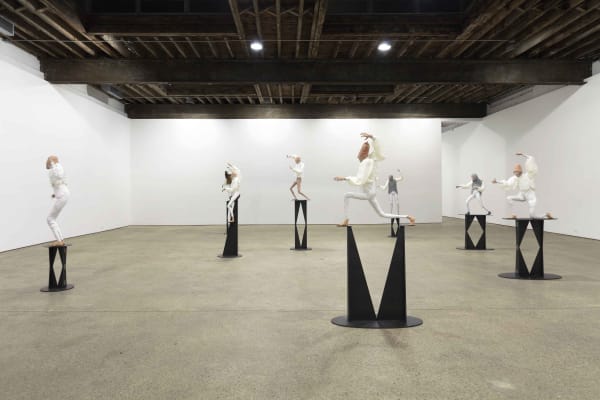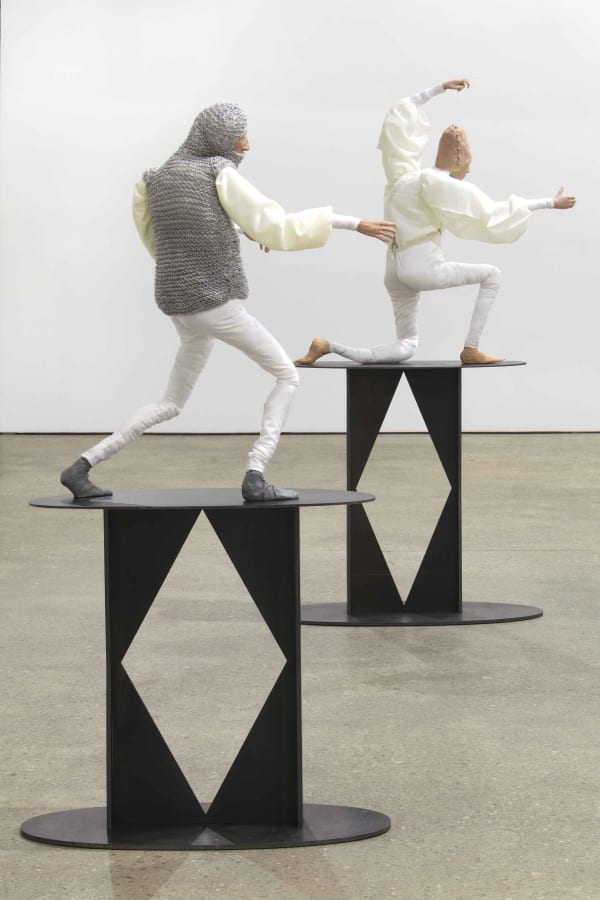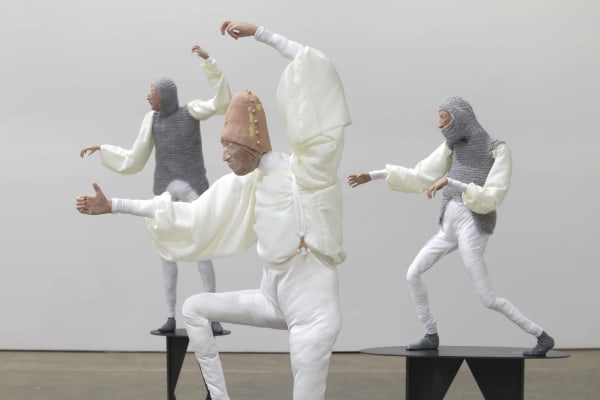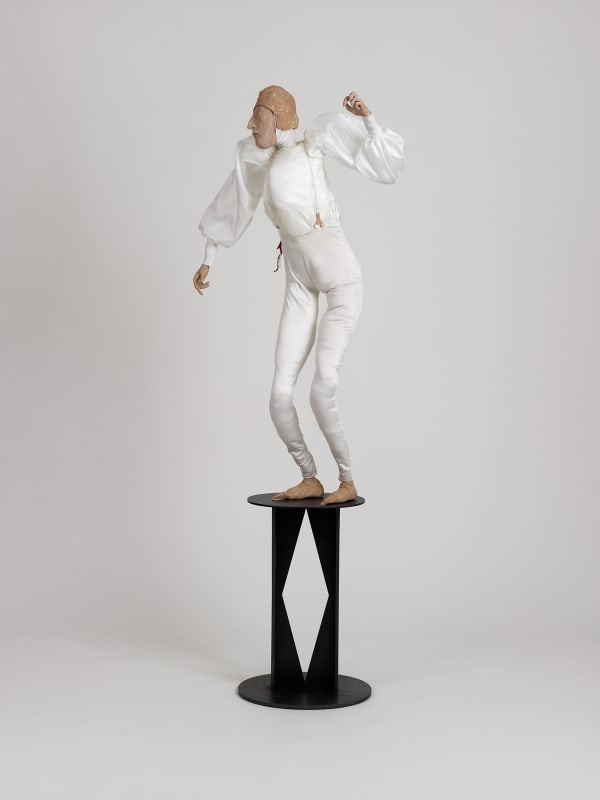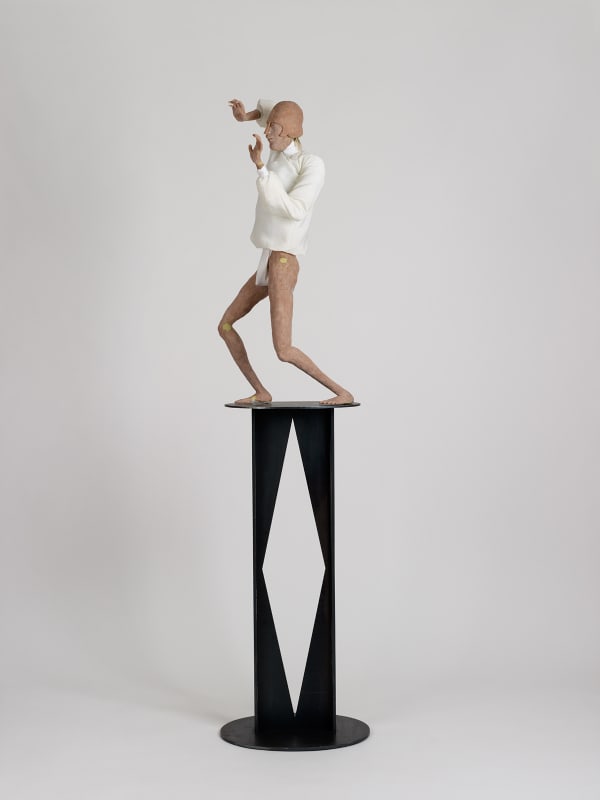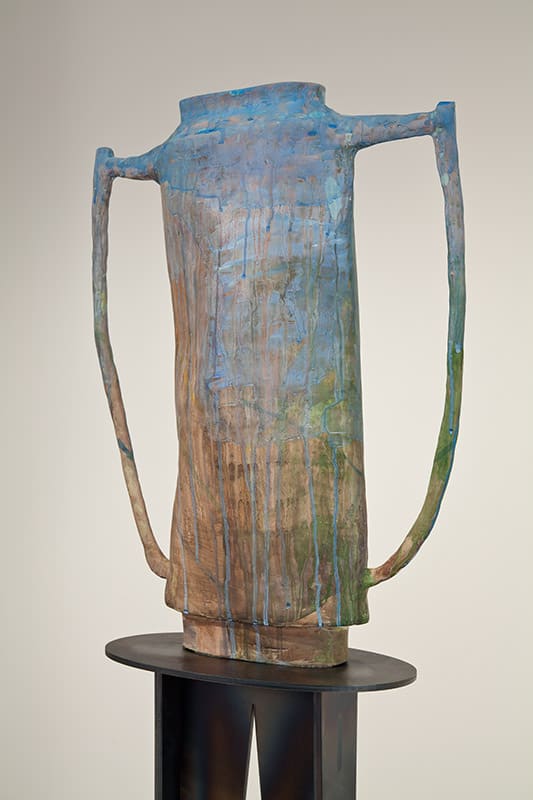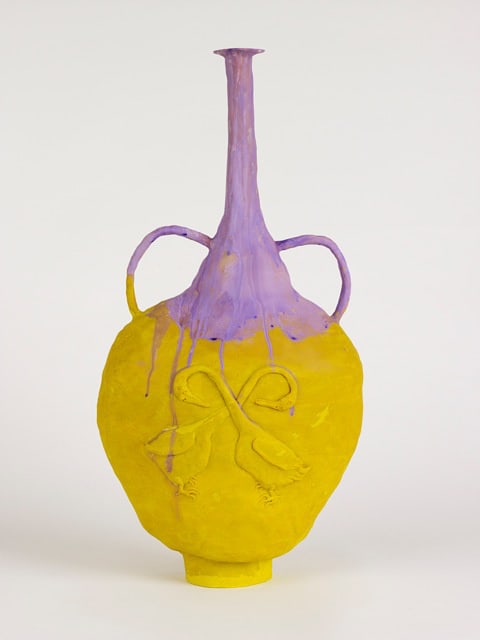War Dance: Francis Upritchard
For her full-scale New York gallery debut, Francis Upritchard – a London-based New Zealander who represented her country at the 2009 Venice Biennale – stages eight figurative sculptures seemingly engaged in a ritualistic war dance. Quite unlike the traditional fierceness of such stylized warfare however, Upritchard’s figures appear to prepare for a different kind of battle, showing off skills of a different nature. Stance, expression, and garb of these delicately modeled sculptures are focused yet tender and soft, at times leaning towards awkward, limp and visceral. Gestures, especially of the hands and elongated fingers, suggest a determined dreamy-ness and wistfulness. The figures’ skin is built up as if made of wax; their facial expressions and half-closed eyes are introverted and withdrawn. All in all, these dancers move closer to the delirious state of a rave than the ferociousness of mock combat.
Alluding to a variety of cultural and temporal influences, Upritchard’s work intimates how effectively the past can be reinterpreted, even manipulated. Here, the artist takes inspiration from medieval sources such as the 11th century Bayeux tapestry as well as the woodcarvings by Northern-Renaissance sculptor Erasmus Grasser, whose work captured the Moresca pantomime and its origins in the sword and mumming dances performed by troupes of jesters and actors at court and in the streets.
A catalog book published on the occasion of Upritchard’s exhibition at the Nottingham Contemporary accompanies the exhibition.
-
 Francis UpritchardLunge, 2012
Francis UpritchardLunge, 2012 -
 Francis UpritchardArcher, 2012
Francis UpritchardArcher, 2012 -
 Francis UpritchardBearer, 2012
Francis UpritchardBearer, 2012 -
 Francis UpritchardPoint, 2012
Francis UpritchardPoint, 2012
-
 Francis UpritchardWhite Knight, 2012
Francis UpritchardWhite Knight, 2012 -
 Francis UpritchardRun, 2012
Francis UpritchardRun, 2012 -
 Francis UpritchardRider, 2012
Francis UpritchardRider, 2012 -
 Francis UpritchardSneaky, 2012
Francis UpritchardSneaky, 2012
-
 Francis UpritchardForest Vase, 2011
Francis UpritchardForest Vase, 2011 -
 Francis UpritchardPewter Tankard, 2012
Francis UpritchardPewter Tankard, 2012 -
 Francis UpritchardArcher tankard, 2012
Francis UpritchardArcher tankard, 2012 -
 Francis UpritchardLone Man Tankard, 2012
Francis UpritchardLone Man Tankard, 2012
